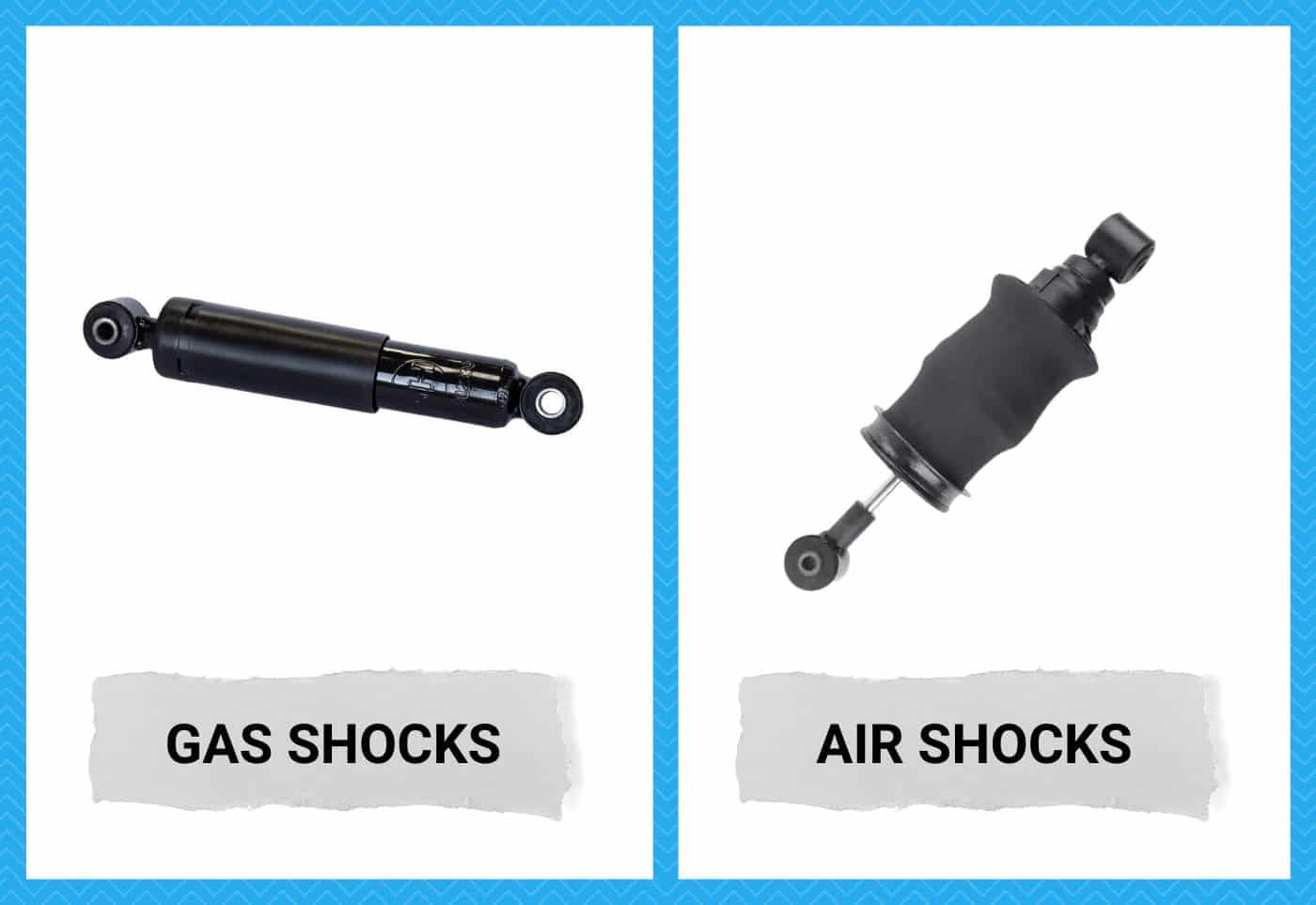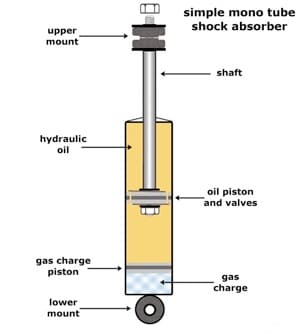
Imagine traveling at 80 mph on a smooth, level road. Then, suddenly, you hit a pothole. You didn’t see it, so you weren’t able to switch to a lower gear before it happened. Luckily, the pothole wasn’t deep, or your vehicle would have toppled.
Or, more accurately, thanks to your vehicle’s suspension system, you avoided an accident. After all, hitting a pothole, even a shallow one, can generate enough force to flip over a standard pickup traveling at that speed without a suspension system to absorb some of the vibrations.
If you’re driving a recreational vehicle to the backwoods, you’ll encounter more than potholes. You’ll go off-road many times and run over all sorts of ruggedness, from tree branches to puddles to small rocks. Your vehicle needs powerful shock absorbers to handle all the thuds.
And it’s not just your RV you should worry about when dealing with shocks. All your furniture and fixtures inside the vehicle also get a portion of the vibration.
Even you and your passengers receive some of that vibration, which might affect your health. However, the shock absorbers make the experience bearable.
What are shock absorbers?
Shock absorbers are devices that dampen the vibration of a vehicle’s spring. You’ll find them underneath your RV behind the tires.
They provide stability, grip, and comfort by absorbing the shock created by the friction between the tires and the road. Controlling your vehicle is also easier when it’s cruising steadily.
Apart from absorbing shock, these devices also keep the tires in contact with the ground. It may sound redundant, but some of the vibration you feel when driving off-road comes mainly from the body of your RV.
While that vibration originates from the ground, your tires eventually interact with the road separately as the suspension system is put to work. And that interaction also needs subduction.
Principles of shock absorption in vehicles
Before we get to the main subject—air and gas shocks—let’s first talk about the physics behind their functionality. This way, we can see the difference between them more clearly.
A standard shock absorber has a precision piston at its center, moving through the hydraulic fluid within a tube. This system is enclosed in another larger tube. Together, they form a chamber where the fluid displaces whenever the piston pushes it through a valve at the bottom.
The piston’s up-and-down movement is the shock absorber’s response to the road’s jaggedness. The hydraulic fluid’s movement into and from the chamber reduces the vibration to a bearable level by converting its kinetic energy into heat.
Ultimately, the shock absorber releases the heat into the air as the vehicle decelerates.
Air Shocks vs Gas Shocks
What is a gas shock?
The hydraulic shock absorber has barely changed since its invention. It still relies on the interaction between a precision piston and a hydraulic fluid. But earlier models are far less efficient than the newer ones.
Do you know why? The free air space within the chamber and the continuous expansion and contraction transform some of the fluid into foam.
Foamy hydraulic fluid converts less kinetic energy into heat. So what manufacturers did to address the foaming problem is put an inert gas, particularly nitrogen, into this free air space.
They learned that pressurized inert gas could keep the fluid intact no matter the pressure exchange within the chamber. That’s how the term “gas shock” came to be.
What is air shock?
An air shock is a shock absorber that has another purpose—to provide more lift. Earlier vehicles used springs to maintain a certain height between the undercarriage and the ground.
While it is efficient, it’s also permanent, which isn’t appealing to motorists who desire flexibility.
They wanted to be able to adjust the height of their vehicles as they pleased. Finally, manufacturers picked up on the demand, so they invented a shock absorber with airbag struts that serve as the vehicle’s spring.
The airbag struts are connected to a pressurized air tank, a pump, and sensors. A controller also allows you to adjust your vehicle to your desired height.
If you want to change your vehicle’s height, calibrate the controller, and the pump will inflate the airbag struts with the pressurized air in the tank. You can also deflate the airbag struts if you want to.
There will be instances when you can’t tell whether your vehicle is elevated at a safe height. This is where the sensors come in. When they detect potential elevation-related danger, they automatically trigger the tank to inflate or deflate the airbag struts.
Unfortunately, the absence of the traditional springs reduces the suspension system’s ability to absorb oscillation.
Also, unlike hydraulic shock absorbers, air shocks cannot automatically resist vibrations. That’s the price of having more control over your suspension system. A combination of the two types of shocks may not be practicable either, as the air shocks might get in the gas shocks’ way.
| Features | Gas Shocks | Air Shocks |
|---|---|---|
| Components | Tubes, piston, and base valve | Air tank, airbag struts, sensors, pump, remote control |
| Absorption Medium | Pressurized liquid and inert gas | Pressurized gas |
| Suitability | On- and off-road | On-road |
| Limitations | Fixed elevation | Adjustable elevation |
So which one is better?
There’s no single correct answer to this question. It will depend on your vehicle type and the terrain you frequently travel on.
Air shocks are most suitable for city cars because they frequently travel on smooth roads. In addition, most city cars have a lower ground clearance, which makes them unsuitable for off-road driving.
On the other hand, recreational vehicles are purposefully designed with more ground clearance and larger tires. As a result, they don’t need additional elevation to avoid large surface debris.
So, air shocks may not be necessary. Plus, you will need a powerful shock absorber to deal with all the bouncing that comes with off-road driving. This gives you more freedom, allowing you to take on even unchartered terrains.
Wrap-Up: Protect Your Investment
We now know that a gas shock uses pressurized liquid and inert gas, while an air shock uses pressurized gas. Both suspension systems are excellent in their unique ways.
You should choose wisely because your vehicle’s longevity and performance depend on it. Especially if you’re investing in an RV, you must factor shock absorbers into your brand, make, and model choice.
If you are not confident with your choice, don’t hesitate to consult with a mechanic who is an expert in RVs.


